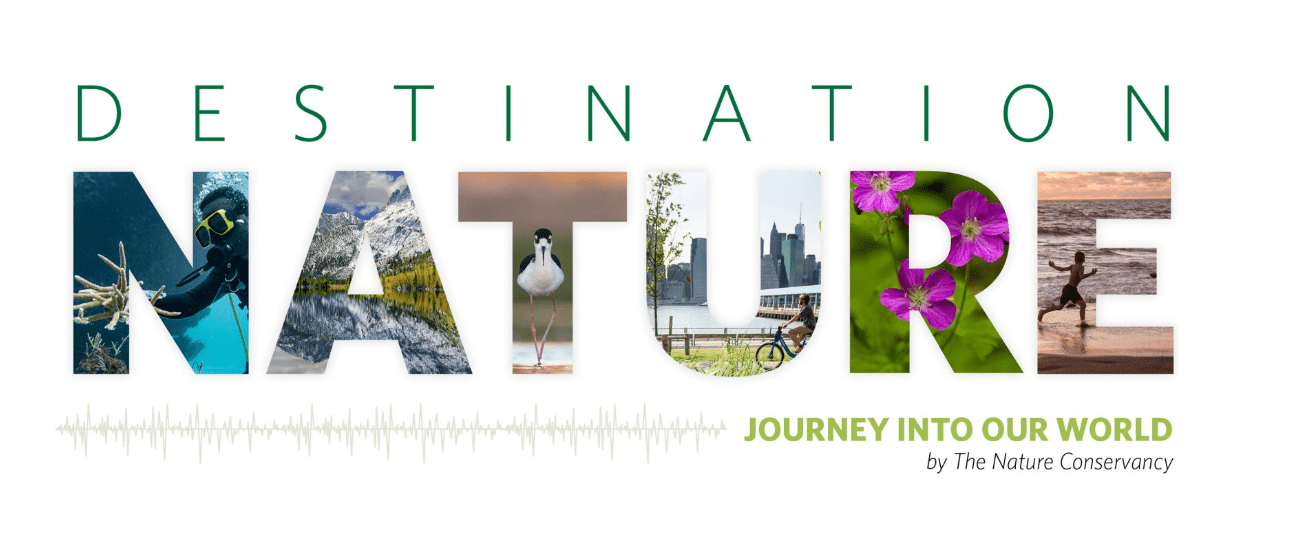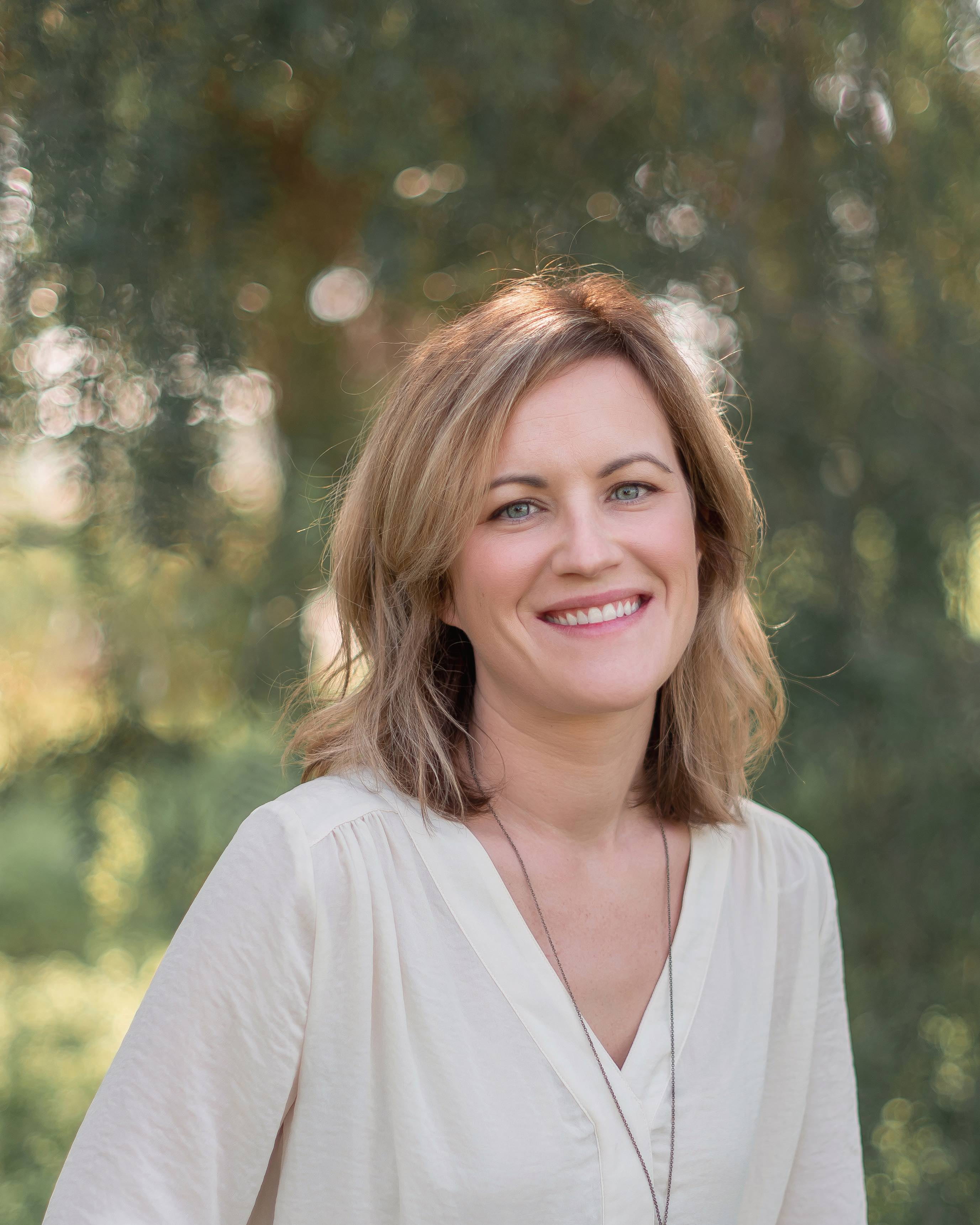
The next was when I was driving home with my young son one day, and I decided to play an episode of TED Radio Hour called Everything is Connected. It was a show about nature, and as we listened, Yellowstone National Park began to appear in front of us. We heard the sounds of wolves howling, of birds singing, of rivers running, of beavers eating, of ducks calling, of bears growling. I glanced in the rear-view mirror and what I saw was profound. My son was no longer in the car with me. He was a thousand miles away, in Yellowstone National Park.
Why create a podcast for donors
I’ve always loved listening to the sounds of nature. There’s research that being in nature – walking in a forest, sitting on a beach, hiking through a field – makes us healthier and happier, but there’s also research on how nature sounds can help us too. Hearing the sounds of nature can be relaxing, and therefore good for us. Since TNC is all about, well, nature, I couldn’t stop thinking about how incredible it would be if we created a podcast that told the stories of our work, set to the sounds of nature that our scientists hear when they are out in the field.
 Moreover, I felt that our donors deserved something like that – it would be a way to take them to our projects like never before. It’s not possible for every single donor to see our work – we are working all around the world. But it was possible to take them there through sound. I was convinced a podcast was what we needed and that I could do it. I’d already created an internal educational podcast (and another independent audio documentary that ended up on one of my favorite podcasts), so I could build off that model.
Moreover, I felt that our donors deserved something like that – it would be a way to take them to our projects like never before. It’s not possible for every single donor to see our work – we are working all around the world. But it was possible to take them there through sound. I was convinced a podcast was what we needed and that I could do it. I’d already created an internal educational podcast (and another independent audio documentary that ended up on one of my favorite podcasts), so I could build off that model.
From podcast idea to reality
There was just one problem – I had to convince everyone else. Lucky for me, TNC is a pretty great place to work for many reasons, one of which is the Fellowships offered throughout the organization. I applied to my divisional Fellowship program with this idea, sharing the story of the moment I saw my son transfixed in the back seat, and was awarded the opportunity to work with a team of advisers to create a pilot podcast. Another reason that TNC is a great place to work is the people. When I told my team
about the project, they were immediately on board to help produce it. And, colleagues from around the organization let me know they’d lend their time and support as well to help take this idea to reality.
Getting to reality was not easy. I thought selecting the stories would be simple – TNC does not lack for good stories. But finding the stories ended up being fairly difficult. Who was available? What media already existed that we could use? Where could we reasonably get to, or cover remotely? Were we showing a good representation of the type of work we do and where we do it?
Ultimately, we created these shows using a mix of recording methods. For the first, we used both remote interviews and existing media TNC had already created. For the second, I went on location to interview the three guests, and a sound tech accompanied me. The third was a mix of remote and in-person interviews, as well as some existing media.
Taking donors on an audio journey
Once the interviews were complete, my team and I would climb through each one, do more research and I’d write a rough draft. They’d take their razor-sharp editing pens to my draft and many hours later, we’d eventually come to a place we were happy with.
My vision for these shows was to take our donors on a journey, so just interviews weren’t going to get us there. To bring each show to life, we worked with a production company that edited the audio and created the sound design as well as the musical score. Once I taped my narration, they’d put it all together, the editing team would listen, we’d revise and repeat.
It was a process to recreate the story scenes in a listener’s mind, but the end result was worth it. We received so many kind notes from supporters letting us know they enjoyed the shows. One person told us, “the sounds made it seem like you were there.” That’s exactly what I had intended, so reading that note was extremely rewarding.
What I learned while creating a nonprofit podcast
I learned an incredible amount while creating this show, not only about new production techniques but also about leadership within a nonprofit – how to be decisive, how to build consensus, and how use stories of those defining moments to rally everyone around a new idea. There were certainly moments where I’d second-guess myself, but at those times I’d remember some great advice I got along the way: “When you’re navigating in the dark, you’re bound to bump into a few things.” There’s no road map for new ideas, so you have to be willing to make a few mistakes to get to where you need to go.
I’m very proud of what my team and I created. In Destination Nature, you can journey to a reef restoration project, or follow the path of a mountain lion, or visit a neighborhood in Philadelphia that’s using nature to help solve storm-water challenges. The show is full of interesting conversations and beautiful and surprising sounds. I hope you’ll listen.
At some point in the future, I’m determined to get back to the Atchafalaya again with my friend, and this time, with a recorder in hand.
Posted by Stacy Raine, CPS’17

Stacy Raine is a communication strategist who helps leaders and organizations create compelling content that engages, connects and inspires audiences for their mission. She loves exploring the outdoors with her family, great conversations and collecting plants.